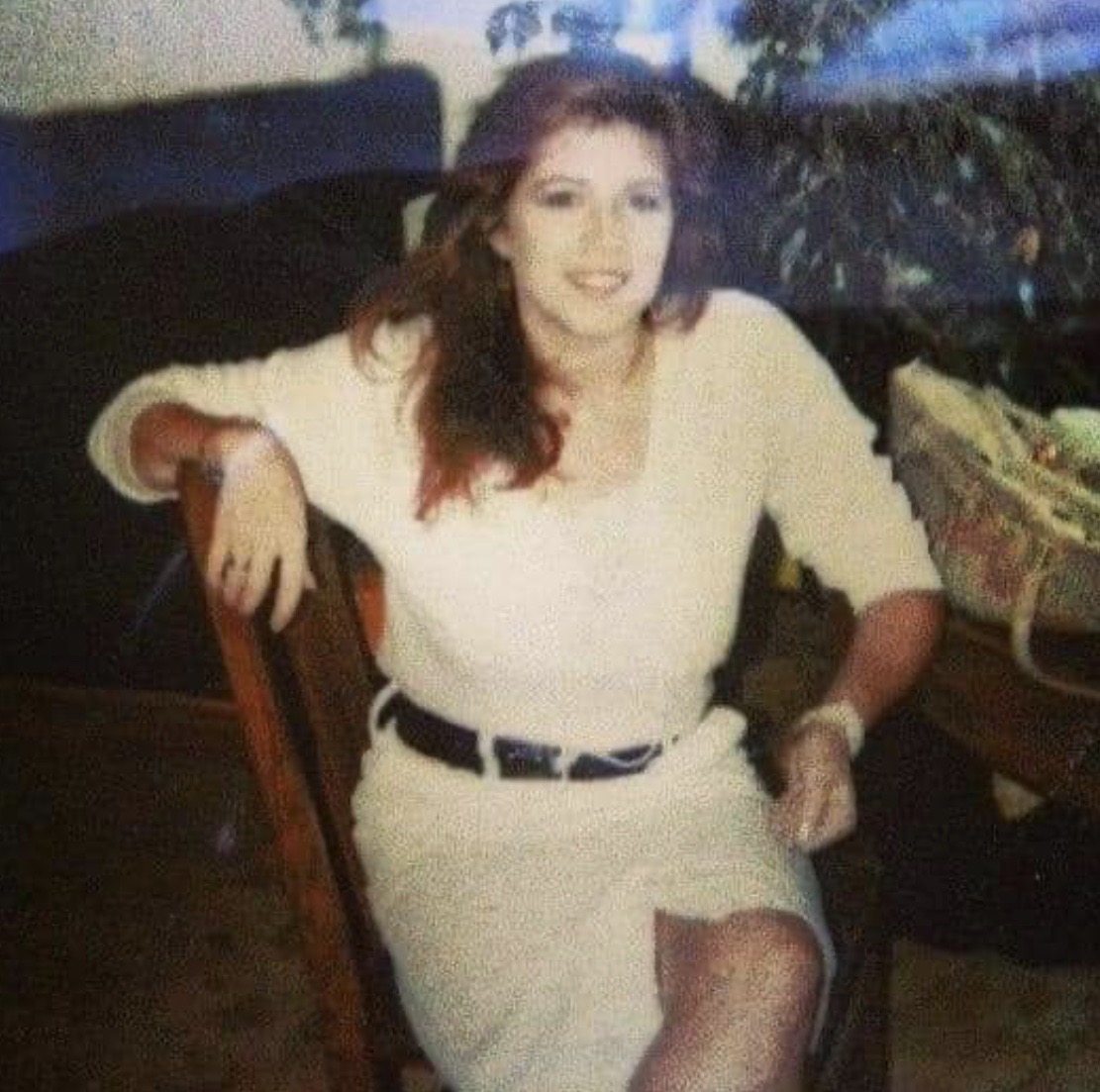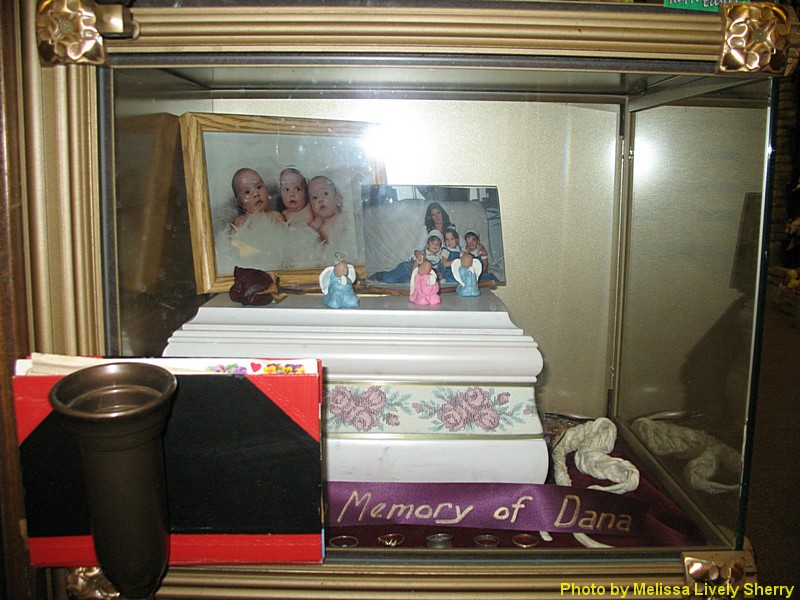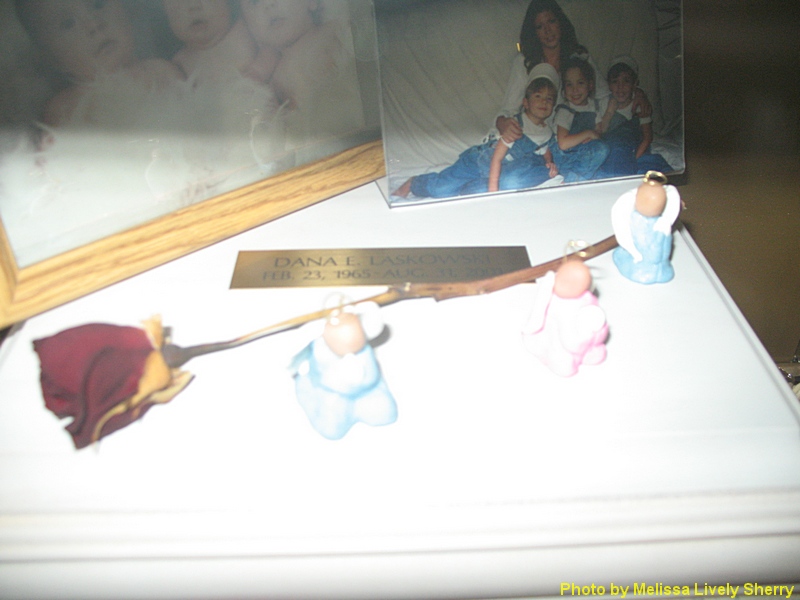For This Couple, Three Babies Meant A Tripling Of Resolve
Jan 2, 1994
Cathy Reiner
Last New Year's Dana and Stan Laskowski were "the most excited expectant parents around."
This year they're calmer, far wiser parents of three.
But for many bewildering months in between - as they faced each other across a hospital bed - the couple wondered if they'd ever become parents.
"A year ago if someone had told me we'd have happy holidays this year, no way," says Dana. "I was ready to give up. It's amazing how often pregnancies are threatened and people do give up and terminate them. They shouldn't."
Last December, after years of infertility problems, Dana, then 27, was four months pregnant with triplets conceived through in vitro fertilization. The couple was eagerly watching her bulging belly.
"We'd dreamed of one baby. To be expecting three, two boys and a girl, was incredible," she says.
A signal of trouble
Just before Christmas, a bout of bleeding signaled early problems and Dana was ordered to stay at home, mostly in bed. "The idea of four or five months doing nothing was daunting," she says. "But I didn't want to do anything to endanger the babies."
Then came Super Bowl weekend. "My water broke, we rushed to the hospital, both of us shaking and in tears. They said I'd probably go into labor within 72 hours."
Babies aren't viable at 20 weeks. The situation was grim, remembers Dr. Joseph Turner, Dana's obstetrician at Evergreen Hospital in Kirkland. "Despite high-tech fertility advances, which are producing more triplet pregnancies, they're very high-risk pregnancies.
"Medical literature suggested the chance for a successful outcome at that point at about 20 percent."
After numerous tests, Turner and other doctors cautiously advised that if labor did start, Dana probably would deliver the girl, whose amniotic sac had burst. There was a remote chance they could continue the pregnancy of the two boys, whose sacs were intact, by immediately using a cerclage - a tight ring - to close Dana's cervix. Drugs would be used to try to stop the labor after she was born.
"The emotional pain was incredible, we were so in love with each baby already," Dana says. "We cried the whole night." Then they decided to get positive. "We wouldn't allow anyone to be upset around us. If we even could just save the boys . . ."
But the medical staff was worried. "They said it might be better if we lost all of them at once. The boys might still be born so premature, we might lose them anyway," Stan says.
Seventy-two hours passed with no more more signs of labor.
A better chance
Turner remembers telling the couple not to get too excited, but that every day that passed gave the babies that much better chance of making it. "If we could hold them at least a month or six weeks, the babies might make it."
Dana was put on absolute bed rest in the hospital. Her only outings were to the bathroom, very slowly. Stan worked days (he's a mechanic), but slept nights at the hospital. They named the unborn girl Brandy and marveled that though her amniotic sac kept leaking, she was cushioned by the boys, Michael and Cody, and kept growing.
Valentine's Day passed, then Dana's birthday, St. Patrick's Day and Easter.
"I was counting milestones, each one we passed, the babies would be that much stronger," Dana remembers. "It seemed forever. I was getting so big, my ribs were loose."
Cass Lloyd, a labor-and-delivery nurse at the hospital remembers those days well. "Most couples stay a day, perhaps three for a Caesarean birth. We hardly get to know them. We had Dana and Stan for 13 weeks, they were part of us. Bed rest - being waited on hand and foot - sounds great, but you have to lie down for months, imagine! But they were always positive."
There were daily monitoring tests and weekly ultrasound scans. Dana's mom brought stacks of videos for the couple to watch and treats to supplement hospital fare. Visitors filled the room with flowers. But most of all was the monotony of day after day in bed.
One of the hardest things, Dana says, was watching as pregnant women arrived one day, left the next, healthy babies in arms. "Would I ever be one of them?" she wondered.
All were strong enough
April 22, Dana went into labor. The babies were 32 weeks, still two months early, but Brandy was showing signs of major stress. Rather than risk her life, the doctors decided all three babies were strong enough to be delivered the next morning by Caesarean section. A crew of 15 - doctors, nurses and technicians - came to help.
At birth Brandy, an amazingly healthy 3.1 pounds, needed oxygen, but was healthy as were Cody, at 4.1 pounds, and Michael, at 4.5 pounds.
Within days mother and babies were home and into the swing of breast-feeding, diaper changing and all the time-consuming tending needed by three infants. The intervening six months have been a blur of first smiles, first rolls, first holidays and thousands of photos.
Costs of raising three babies at once are not inconsequential: Think diapers, formula, clothes, three car seats, a triplet stroller. But the Laskowskis have been lucky. Various businesses, manufacturers and other families of multiples have helped. Their medical insurance covered most of the nearly $70,000 in medical costs.
Turner, Lloyd and others who too often work with problematic pregnancies hold the Laskowskis up as an example of not giving up.
"They believed so strongly in a positive outcome," Turner says. "We did everything technically to keep those babies, but it was their determination that made the difference."
Dana and Stan just smile.
"Whatever it took," says Dana as she cuddles Michael in one arm and watches Stan play with Brandy. "Whatever it takes now, we're willing to do."
For This Couple, Three Babies Meant A Tripling Of Resolve
Jan 2, 1994
Cathy Reiner
Last New Year's Dana and Stan Laskowski were "the most excited expectant parents around."
This year they're calmer, far wiser parents of three.
But for many bewildering months in between - as they faced each other across a hospital bed - the couple wondered if they'd ever become parents.
"A year ago if someone had told me we'd have happy holidays this year, no way," says Dana. "I was ready to give up. It's amazing how often pregnancies are threatened and people do give up and terminate them. They shouldn't."
Last December, after years of infertility problems, Dana, then 27, was four months pregnant with triplets conceived through in vitro fertilization. The couple was eagerly watching her bulging belly.
"We'd dreamed of one baby. To be expecting three, two boys and a girl, was incredible," she says.
A signal of trouble
Just before Christmas, a bout of bleeding signaled early problems and Dana was ordered to stay at home, mostly in bed. "The idea of four or five months doing nothing was daunting," she says. "But I didn't want to do anything to endanger the babies."
Then came Super Bowl weekend. "My water broke, we rushed to the hospital, both of us shaking and in tears. They said I'd probably go into labor within 72 hours."
Babies aren't viable at 20 weeks. The situation was grim, remembers Dr. Joseph Turner, Dana's obstetrician at Evergreen Hospital in Kirkland. "Despite high-tech fertility advances, which are producing more triplet pregnancies, they're very high-risk pregnancies.
"Medical literature suggested the chance for a successful outcome at that point at about 20 percent."
After numerous tests, Turner and other doctors cautiously advised that if labor did start, Dana probably would deliver the girl, whose amniotic sac had burst. There was a remote chance they could continue the pregnancy of the two boys, whose sacs were intact, by immediately using a cerclage - a tight ring - to close Dana's cervix. Drugs would be used to try to stop the labor after she was born.
"The emotional pain was incredible, we were so in love with each baby already," Dana says. "We cried the whole night." Then they decided to get positive. "We wouldn't allow anyone to be upset around us. If we even could just save the boys . . ."
But the medical staff was worried. "They said it might be better if we lost all of them at once. The boys might still be born so premature, we might lose them anyway," Stan says.
Seventy-two hours passed with no more more signs of labor.
A better chance
Turner remembers telling the couple not to get too excited, but that every day that passed gave the babies that much better chance of making it. "If we could hold them at least a month or six weeks, the babies might make it."
Dana was put on absolute bed rest in the hospital. Her only outings were to the bathroom, very slowly. Stan worked days (he's a mechanic), but slept nights at the hospital. They named the unborn girl Brandy and marveled that though her amniotic sac kept leaking, she was cushioned by the boys, Michael and Cody, and kept growing.
Valentine's Day passed, then Dana's birthday, St. Patrick's Day and Easter.
"I was counting milestones, each one we passed, the babies would be that much stronger," Dana remembers. "It seemed forever. I was getting so big, my ribs were loose."
Cass Lloyd, a labor-and-delivery nurse at the hospital remembers those days well. "Most couples stay a day, perhaps three for a Caesarean birth. We hardly get to know them. We had Dana and Stan for 13 weeks, they were part of us. Bed rest - being waited on hand and foot - sounds great, but you have to lie down for months, imagine! But they were always positive."
There were daily monitoring tests and weekly ultrasound scans. Dana's mom brought stacks of videos for the couple to watch and treats to supplement hospital fare. Visitors filled the room with flowers. But most of all was the monotony of day after day in bed.
One of the hardest things, Dana says, was watching as pregnant women arrived one day, left the next, healthy babies in arms. "Would I ever be one of them?" she wondered.
All were strong enough
April 22, Dana went into labor. The babies were 32 weeks, still two months early, but Brandy was showing signs of major stress. Rather than risk her life, the doctors decided all three babies were strong enough to be delivered the next morning by Caesarean section. A crew of 15 - doctors, nurses and technicians - came to help.
At birth Brandy, an amazingly healthy 3.1 pounds, needed oxygen, but was healthy as were Cody, at 4.1 pounds, and Michael, at 4.5 pounds.
Within days mother and babies were home and into the swing of breast-feeding, diaper changing and all the time-consuming tending needed by three infants. The intervening six months have been a blur of first smiles, first rolls, first holidays and thousands of photos.
Costs of raising three babies at once are not inconsequential: Think diapers, formula, clothes, three car seats, a triplet stroller. But the Laskowskis have been lucky. Various businesses, manufacturers and other families of multiples have helped. Their medical insurance covered most of the nearly $70,000 in medical costs.
Turner, Lloyd and others who too often work with problematic pregnancies hold the Laskowskis up as an example of not giving up.
"They believed so strongly in a positive outcome," Turner says. "We did everything technically to keep those babies, but it was their determination that made the difference."
Dana and Stan just smile.
"Whatever it took," says Dana as she cuddles Michael in one arm and watches Stan play with Brandy. "Whatever it takes now, we're willing to do."
Family Members
Sponsored by Ancestry
Advertisement
Records on Ancestry
Advertisement






